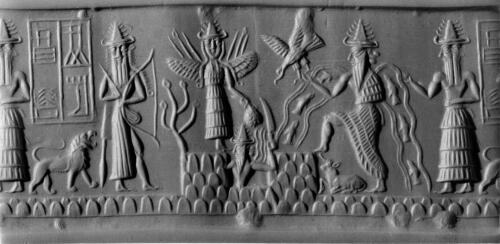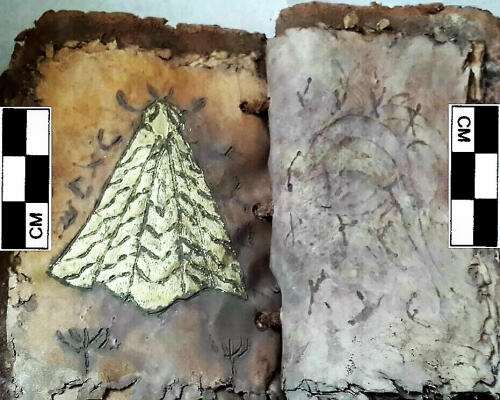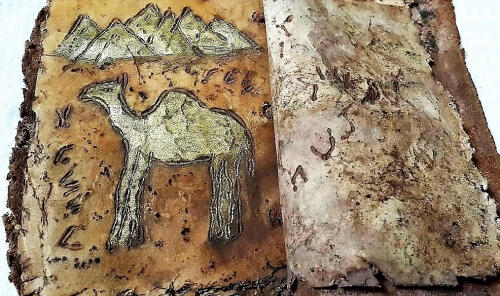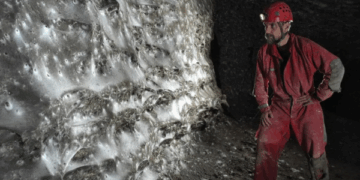According to Maritime Executive’s Joel Klenck, a calf-skin parchment was found inside Noah’s Ark, recently rediscovered, which was estimated to be from the period of 13,100-9,600 BC. The parchment contained Paleo-Hebrew letters, numbers, and grammar, thought to be written by one of the four individuals mentioned in both Genesis 6:10 and the Qur’an, such as Noah, Shem, Ham, Japheth, or their wives.
Joel Klenck, from Academia.edu, asserts that Noah’s Ark, accessible through tunnels four to eleven meters below ground level and located in the southern gorge of Mount Ararat, is the most impressive archaeological site of all time. The vessel is estimated to have been built in the Late Epipaleolithic Period (13,100-9,600 BC) and is approximately 158 meters long, with a height of 3,900 to 4,700 meters. Additionally, there are fourteen archaeological features in total.
The Turkish Republic is presented with a life-or-death opportunity by the presence of Noah’s Ark; it could bring a yearly revenue of $38 billion dollars to Dogubayazit, the nearest city, through religious tourism due to the support of the three Abrahamic faiths of the Semitic language group. If the central government of Turkey does not act to protect Noah’s Ark, the PKK, a Marxist organization known for their violent terrorism, might uncover the vessel, swap its invaluable codex and artifacts for weapons, and release Stone Age pandemics from the thawing animal feces within, causing harm to the Turkish civilians.

In the vicinity of the entrance to Noah’s Ark, later generations constructed small places of worship that contained artifacts uniquely placed to symbolize reverence for thousands of years. Archaeologists discovered potsherds from the Pottery Neolithic period (7,000-5,800 BC) up to the Medieval era (AD 700-1375) which were filled with traces of wine, milk, and seeds. Additionally, small stone figures from the Sumerian Early Dynastic Period (2,900-2,334 BC) were found in these worship areas.
The Akkadian seals from 2,300 BC depict an Ark on greater Mount Ararat, while Hurrian tablets from 1,300 BC reference Noah, Mount Ararat, and a supreme deity. This structure is consistent with the accounts of Noah’s Ark written by Patriarch Moses in Genesis, renowned scholars Berossus and Josephus, and the Quran of Islam’s Prophet Muhammed.

The archaeologist observes that the Codex does not conform to current theories which hold that the first languages originated from populations scattered around the world. Rather, the presence of the Ark on Mount Ararat, with its Paleo-Hebrew script, upholds the assertions of Moses, Jesus, and the Islamic Prophet Muhammed that the Semitic languages constitute the first language on earth, surviving the worldwide deluge.
Abraham Ibn Ezra (AD 1089-1167), among other renowned scholars, propounded that the initial chapters of Genesis were transmitted orally from Adam to Moses. The term ‘Toledot’, which means ‘account’ or ‘generations’, is presented for the first time in Genesis 2:5, and is repeated in subsequent chapters, such as Genesis 5:1, 6:9, 10:1, 10:32, and 11:10. In Ibn Ezra’s view, this technique was utilized to ensure the preservation of the Biblical narrative from creation to the Exodus from Egypt. Nevertheless, the discovery of the Codex in the Late Stone Age, written in Paleo-Hebrew, implies that Toledot is more likely to have been a collection of written documents that Moses incorporated into the Pentateuch, from Genesis to Deuteronomy.

Archaeologists are faced with a more straightforward explanation for the invention of pottery due to Noah’s Ark: Stone Age people would create vessels from wood, then cover them with clay and heat them over a fire. Eventually, people moved away from wooden designs and instead utilized clay vessels that were strengthened by heat, setting the groundwork for the development of ceramic manufacturing.
The Codex contains a variety of handwriting styles, ranging from the heavier, block-like writing of one person to the more delicate, refined strokes of an editor who corrected a mistake in the word “life,” written in Paleo-Hebrew.
The Noah’s Ark Codex is composed of parchment, known as klaf or vellum, created from the hide of kosher animals like calves. The codex’s cover is 14.67 cm in length and 10.59 cm in width, with three bindings made of soft leather. There are seven pages of thin klaf with fraying edges, measuring 9.75 cm in length and 7.53 cm in width.
The parchment of the Vellum contains much collagen. When the water in the paint comes into contact with the parchment, the collagen melts, forming grooves in the klaf and raised surfaces for the paint. It is also susceptible to the environment, particularly humidity. The Codex was found in Locus 14, Area A1, the most elevated and secure area of the Ark. This area is encircled by four bigger structures and the vessel’s hull. The inside and outside of these structures are coated with layers of pitch, bitumen, and resin. The elevation of Area A1 is above 4000 meters on Mount Ararat and is buried under 8 meters of glacial ice and lithic material, with no humidity. The majority of the paint from the Codex has been faded away, but what remains are the striations made by the collagen melting when the paint was first applied during the Late Epipaleolithic Period (13,100 – 9,600 BC).
The Codex is composed in a right-to-left orientation, like contemporary Hebrew and Arabic, and top-to-bottom. The pages have been stuck together. Unfortunately, when the manuscript was discovered, two sections were separated, revealing pages 2, 3, 4 and 5. On pages 2 and 4, faint impressions of the vellum’s collagen can be observed, but they display reversed images. Thus, scholars can see the reverse of pages 2 and 4, and the front of pages 3 and 5. The Paleo-Hebrew characters range in clarity from deeply incised letters to subtle striations. In order to uncover more words and symbols from the Codex, multi-spectral and x-ray imaging is needed.
In the Codex, the first indication of illumination is visible with three images: Mount Ararat, the mountain range located to the south of Ararat, and a camel. This layer is composed of shell gold, which is gold powder blended with either gum arabic or egg. Additionally, two 5-candle menorahs can be seen without bases near the larger Mount Ararat.
Kurdish people living near Mount Ararat believe that Noah’s Ark holds gold, and this is in fact true. The illumination on the Codex was made using gold powder sourced within the vessel. As the Ark is situated in a distant and isolated location on a mountain in the Near East, far from gold sources, it is likely that the gold powder is from a time before the elevation of the Mountain was increased due to volcanism and its north side was altered in morphology, estimated to be around 9,600 BC in the Epipaleolithic Period.
The Codex also speculates that there could be other klaf manuscripts held within Noah’s Ark. The authors of the Codex have chosen to not entirely use up all the surface area of the parchment and have, instead, used it as a form of literature, with Paleo-Hebrew word plays, brief statements, and the depiction of illuminated images. Additionally, the text makes references to aspects about Noah and the Great Flood mentioned in both Genesis and the Qur’an, but none of its phrases can be found in either document. It is my belief that other manuscripts, such as the ‘Toledot’ parts mentioned in the Bible and talked about by Ibn Ezra, are still preserved inside the vessel.
Klenck postulates that the government of Turkey ought to be in control of the Codex, as well as the artifacts and architecture from Noah’s Ark, that have been praised by Muhammed, Jesus and Moses alike. He continues by expressing his dismay at the lack of supervision by the Turkish archaeology authorities, as these priceless artifacts which symbolize the beginning of civilization and the Neolithic Period, are being looted and damaged. Klenck concludes, calling this destruction of the Ark and its artifacts a catastrophe.
PRC, Inc., established in 2007, offers global archaeological services which cover surveys, excavations and investigations.
The importance of exercise is undeniable. Physical activity is essential for our overall health, as it helps to strengthen the body and mind. It can help to reduce the risk of developing many chronic illnesses and improve our quality of life. Exercise does not have to be overly strenuous in order for it to be beneficial; even moderate exercise can provide substantial health benefits.























